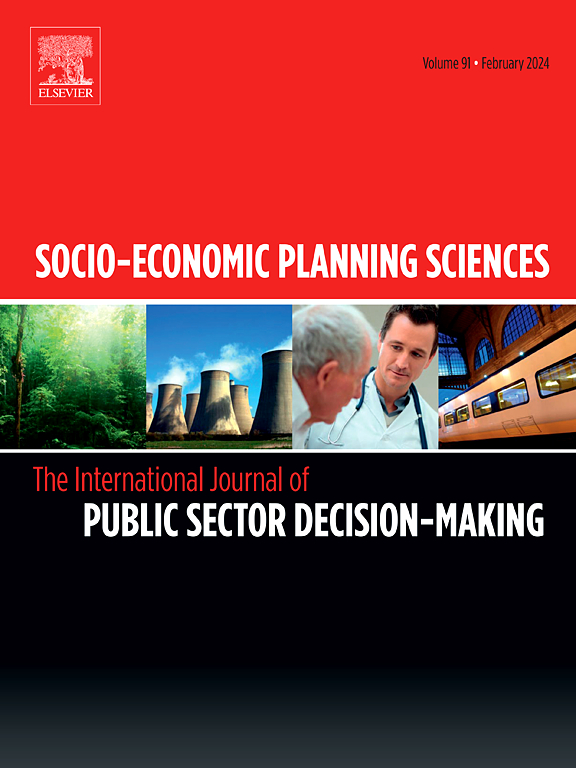Realistic strategies for dynamic ambulance relocation
IF 5.4
2区 经济学
Q1 ECONOMICS
引用次数: 0
Abstract
The location of vehicles is a decision of significant importance for Emergency Medical Services. However, the delivery of emergency care is dynamic in nature and the initial locations of ambulances may quickly prove inadequate for maintaining coverage as they are dispatched to attend to patients. Rather than increasing the size of the fleet of vehicles, research has focused on the dynamic relocation of ambulances. This approach allows available vehicles to move to sites beyond their usual bases, maintaining an appropriate level of service. The scientific community has proposed a wide variety of ambulance relocation strategies using different methodological approaches. However, most of the strategies have not been implemented by real life Emergency Medical Services. This study proposes a scenario-based dynamic relocation algorithm that incorporates the following realistic aspects: it allows ambulances to start and end their work shift at their usual base, regardless of the number of relocations performed; a methodology based on Geographic Information Systems is developed to determine the positions of ambulances en route in order to be able to assign these ambulances to emergencies. In addition, the importance of relocating ambulances at different times of the day is studied. The proposed algorithm is validated by applying it to a real life case, in the city of Valencia, Spain, where the importance of considering these realistic aspects is shown.
救护车动态搬迁的现实策略
车辆的位置是紧急医疗服务的一个重要决定。然而,紧急护理的提供本质上是动态的,救护车的初始位置可能很快被证明不足以维持覆盖范围,因为它们被派去照顾病人。而不是增加车队的规模,研究集中在救护车的动态搬迁。这种方法允许可用车辆移动到其通常基地以外的地点,保持适当的服务水平。科学界使用不同的方法方法提出了各种各样的救护车搬迁策略。然而,大多数战略并没有在现实生活中的紧急医疗服务中得到实施。本研究提出了一种基于场景的动态搬迁算法,该算法包含以下现实方面:无论进行多少次搬迁,它都允许救护车在通常的基地开始和结束他们的工作班次;开发了一种基于地理信息系统的方法来确定途中救护车的位置,以便能够将这些救护车分配到紧急情况。此外,研究了在一天中不同时间重新安置救护车的重要性。该算法在西班牙瓦伦西亚市的一个实际案例中得到了验证,表明了考虑这些现实方面的重要性。
本文章由计算机程序翻译,如有差异,请以英文原文为准。
求助全文
约1分钟内获得全文
求助全文
来源期刊

Socio-economic Planning Sciences
OPERATIONS RESEARCH & MANAGEMENT SCIENCE-
CiteScore
9.40
自引率
13.10%
发文量
294
审稿时长
58 days
期刊介绍:
Studies directed toward the more effective utilization of existing resources, e.g. mathematical programming models of health care delivery systems with relevance to more effective program design; systems analysis of fire outbreaks and its relevance to the location of fire stations; statistical analysis of the efficiency of a developing country economy or industry.
Studies relating to the interaction of various segments of society and technology, e.g. the effects of government health policies on the utilization and design of hospital facilities; the relationship between housing density and the demands on public transportation or other service facilities: patterns and implications of urban development and air or water pollution.
Studies devoted to the anticipations of and response to future needs for social, health and other human services, e.g. the relationship between industrial growth and the development of educational resources in affected areas; investigation of future demands for material and child health resources in a developing country; design of effective recycling in an urban setting.
 求助内容:
求助内容: 应助结果提醒方式:
应助结果提醒方式:


